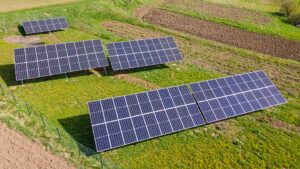Blended finance offers a solution that “can help alleviate the technological and market risks” associated with investment in the low carbon economy, according to a report by the Institute for Energy Economics and Financial Analysis (IEEFA) and auctusESG.
The report Blended Finance: Key to Bridging Energy Transition Gap in Developing Countries emphasises that blended finance is a useful financing tool for projects with combined developmental objectives, which otherwise do not get funded via conventional financing channels. It does this by pooling public and private capital in a risk-adjusted return structure, while adding an element of concessional capital to the pool.
However, in developing and emerging economies, commercial financiers are mostly backing utility-scale wind and solar projects at the expense of small-scale projects such as mini grid solar power. This is despite the fact that, besides being a low carbon source of power, mini grids can provide both environmental and social benefits, particularly for communities that are underserved in their energy needs even when grid connection is provided.
According to the United Nations’ Industrial Development Organization, mini grids are a set of small-scale electricity generators interconnected to a distribution network that supplies electricity to a small, localised group of customers, usually operating independently from the national transmission grid.
Shantanu Srivastava, co-author of the report and lead analyst for sustainable finance and climate risk at IEEFA, said mini grid deployment via blended finance has the potential to transform the lives of millions of people in emerging economies like India and Africa, especially those without regular access to grid power.
“Electrification provides social benefits such as raising household incomes, and access to education and healthcare. Mini grids help achieve UN’s SDG 7 – ensuring access to affordable, reliable, sustainable and modern energy – and SDG 8 – promoting inclusive and sustainable economic growth, employment, and decent work for all,” explains Srivastava.
Blended finance solutions
Last year, the World Bank released a report showing at the current rate of progress, 595 million Africans will remain without electricity in 2030. They called on the finance industry to systematically identify mini grid opportunities, drive costs down and overcome barriers to financing.
Srivastava said mini grids are still not scaling up in emerging markets, primarily due to the lack of scalable and bankable business models. Given the need, the report provides a blended finance mechanism to help de-risk and scale up mini grid business models by addressing the key issues that prevent commercial capital from flowing to them.
Solutions in the report include scaling up mini grids using blended finance mechanisms that can derisk specific business models. Grant-funded technical assistance and revenue shortfall guarantees are among the suggestions, blended with concessional and market rate debt, and developer equity contributions. Asset aggregation is also cited as a way to bring scale, alongside community engagement to establish demand buy-in and demand estimation, and robust measurement, reporting and verification to ensure the model can scale up and achieve commercial viability.
“Blended finance’s bespoke structuring approach, involving public and private capital, addresses the perceived financial risks, and thus provides comfort to raise commercial capital at scale. Using blended finance judiciously based on contextual factors would not only facilitate finance for energy transition at scale but would create energy access to millions suffering from energy poverty while enabling a climate-smart planet,” asserts the report’s co-author, Namita Vikas, founder and managing director of auctusESG.
Although blended finance should not be treated as a grant – still demanding reasonable financial returns, even if the desired returns may vary from market returns – auctusESG vice-president, Sourajit Aiyer, agreed.
“This transformative pathway could allow those still living with a degree of energy poverty in emerging economies to leapfrog fossil fuel-generated power and tap into the opportunities provided by renewable energy applications. Blended finance could also provide a blueprint for other developing economies to ensure no one is left behind in the energy transition.”
